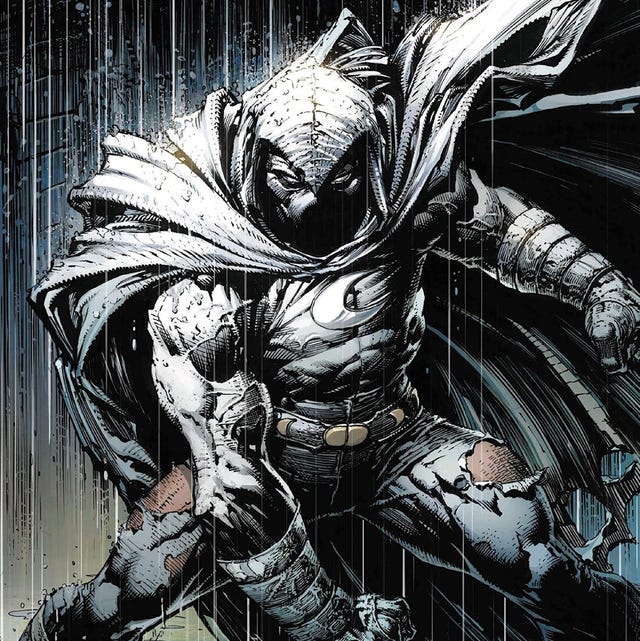
Marvel Comics
The newest Marvel Cinematic Universe series on Disney+, Moon Knight, boasts unparalleled talent. With award-winning actors Oscar Isaac and Ethan Hawke in leading roles, and directing split between Egyptian director Moahamed Diab and indie-horror filmmakers Justin Benson and Aaron Moorehead (Synchronic is on Netflix—check it out when you get a chance), the series has talent both in front of and behind the camera.
But the character on which the show is based has far less name recognition. Moon Knight is, at best, a C-level Marvel superhero. Although he’s had many solo series since 1980, none of them have lasted more than 40 issues. Moon Knight serves only a supporting role in company-wide crossovers and his short tenure in the Avengers was with the West Coast team.
And yet, Moon Knight is one of the most interesting Marvel superheroes, and one with a rabid cult following, thanks to his strange origin. Created by writer Doug Moench and artist Don Perlin, Moon Knight is the soldier of fortune Marc Spector. And also millionaire playboy Steven Grant. And also hard-luck cabbie Jake Lockley.
Spector has Dissociative Identity Disorder (sometimes incorrectly referred to as “schizophrenia” in early stories), but that doesn’t prevent him from becoming an agent of the Egyptian moon god Khonshu. As the Fist of Khonshu, Moon Knight defends those who travel under the moon, aided by his high-tech weaponry and mystical powers.
The Moon Knight series certainly gives us an interesting take on the hero, but there’s no way that six episodes can fully capture the variety and complexity of the character (which is why we’re also hopeful that his journey will continue in the MCU for years to come). To get all the multiple approaches to the hero with multiple personalities, check out these comics.
Advertisement – Continue Reading Below
This content is created and maintained by a third party, and imported onto this page to help users provide their email addresses. You may be able to find more information about this and similar content at piano.io
Advertisement – Continue Reading Below


Comments are closed.